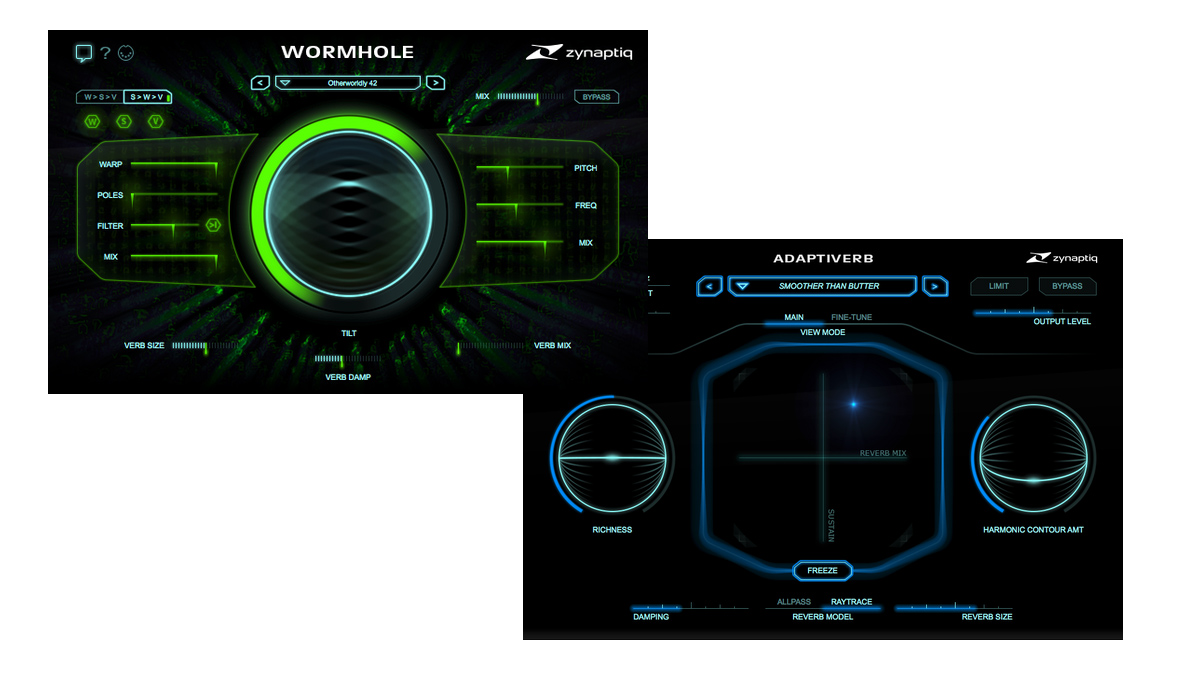Musikmesse 2016: Zynaptiq's Adaptiverb plugin borrows AI technology from a self-driving car
Wormhole effects processor also announced

MUSIKMESSE 2016: Zynaptiq has confirmed that it'll be showing two new plugins in Frankfurt, and also that it'll be serving an "excellent single malt". We're not sure which of these three announcements we're most excited about.
Probably best to focus on the plugins here, starting with Adaptiverb, a reflectionless reverb plugin. This eschews the traditional method of room modelling using reflections, instead focusing on "creating depth, harmonic richness, and butter-smooth harmonic tails without obscuring the source or perceptually moving it back".
A variety of technologies have been used in Adaptiverb's creation, including ray tracing reverberation, adaptive similarity filtering and - most excitingly - a new AI technique that's said to be similar to that used in self-driving cars so that they don't crash into things. Now that's something we weren't expecting to hear.
Adaptiverb promises to create lush spaces, smooth drones and far-out textures, and is expected to ship in the second quarter of 2016.
Down the wormhole
Zynaptiq's other newbie is Wormhole, which is designed to create other-worldly sounds. If features a spectral warping section, a reverb and a processor that integrates pitch and frequency shifting into a single process. It specialises in alien voices, surreal ambiences, spaceship drones and off-the-wall instruments - things that sound not of this world, basically.
As with Adaptiverb, Wormhole will be shipping within the next few months. Both plugins will be available in VST/AU/AAX/RTAS formats for PC and Mac, though we don't yet know how much they'll cost.
Preliminary specs are below and you can find out more on the Zynaptiq website.
Want all the hottest music and gear news, reviews, deals, features and more, direct to your inbox? Sign up here.
Zynaptiq Adaptiverb features
- Revolutionary new reverberation approach with unique sonic characteristics.
- Harmonic Contour Filtering circuit forremoving output components not in tune with the input, a captured harmonic fingerprint, or a definable set of notes.
- Non-Linear Harmonic Tracking Resynthesis eliminates noisy components from the input for clear, harmonic results, and creates stunningly organic tails.
- Ray-Tracing and Allpass based reverb engines.
- Freeze function for creating infinite reverb type sounds.
- SIMPLIFY function that recreates the input's harmonic content with a small amount of oscillators for additive synthesis type sounds — without the warbliness.
- Pre-Processing section including harmonic synthesis based AIR.
- RICHNESS parameter for adding octave, fifth and unison interval harmonics into the reverb.
- MIDI control of all key parameters.
Zynaptiq Wormhole features
- WARP section with unique spectral warping circuit.
- SHIFT section with +- 4 octaves of pitch-shifting and +- 4000Hz of frequency shifting, performed in one calculation.
- Selectable processing order for WARP and SHIFT.
- Near-perfect side-band and carrier suppression on the frequency shifter for signficantly enhanced results.
- Unique pitch shifter design with distinct sonic characteristics.
- Lush sounding reverb section.
- MIDI Control of all key parameters.



I’m the Deputy Editor of MusicRadar, having worked on the site since its launch in 2007. I previously spent eight years working on our sister magazine, Computer Music. I’ve been playing the piano, gigging in bands and failing to finish tracks at home for more than 30 years, 24 of which I’ve also spent writing about music and the ever-changing technology used to make it.